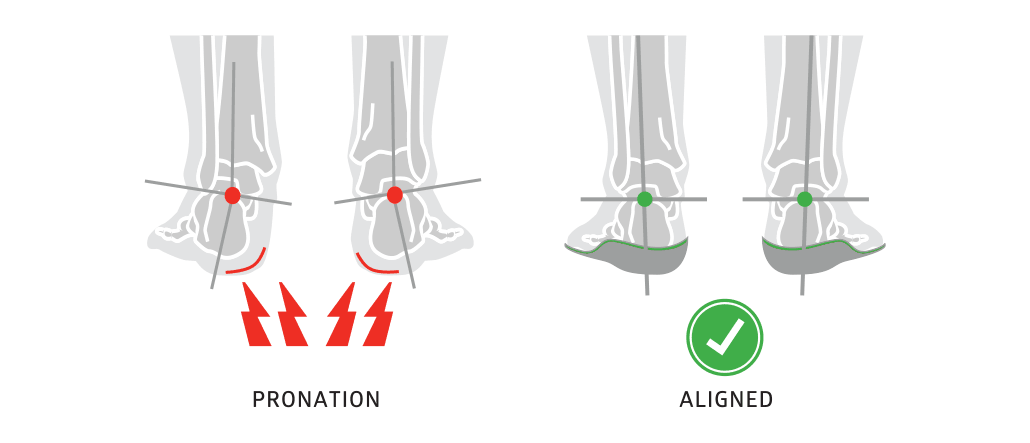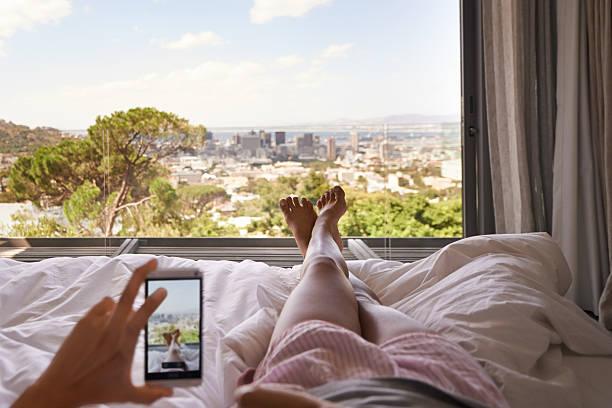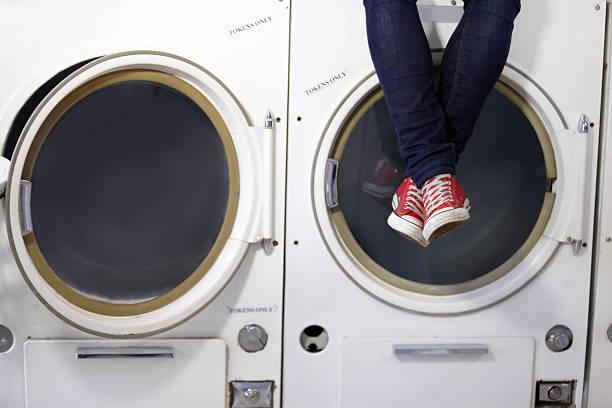Foot Pain After Running: 5 Common Causes and Solutions

Our feet and ankles are the most important parts during workouts, like walking and running, sometimes we will feel foot pain after running.
You can run through a tight hamstring, but a sprained ankle or painful feet gives you a break you didn't intend to take. When they are healthy, they make us love our sport or exercises.
The feet and ankles are built to be tough so as to sustain two or three times our weight. However, when overworked or not strengthened enough, they will definitely send a message.
In most cases, the message can be in the form of foot pain or frequent injuries such as ankle sprains and hamstrings problems.
This is the reason professional runners spend hundreds of dollars a year guarding their feet with supportive materials and high-tech shoes. They know that if their feet are compromised, then everything will be out of balance, and injuries can hit at any tine
Of course, in addition to investing in quality footwear, there are other strategies runners use to prevent foot pain after running, and we will discuss that later on.
If you have been experiencing foot pain after going for your usual runs, it is vital to first understand what is causing the pain before discussing some of the things you can do to prevent or ease it.
The 5 Common Causes of Foot Pain After Running
Foot pain after running can range from minor soreness to intense injuries. These are the five common causes of foot pain among runners;
- Plantar fasciitis. This condition occurs when the plantar fascia, the band of tissue connecting the heel bottom to the ball of the feet, suffers from inflammation. These tissues are prone to injuries from running, but you can reduce stress on them by wearing supportive running shoes and cushioned socks
- Over-pronation. This occurs when your foot experiences excessive inward rotation as it hits the ground, thereby causing tissue strain. Again, you can prevent this by wearing running shoes with ample support
- Tendinitis. Swelling and irritation of feet tendons are the main causes of tendinitis. Often, this is caused by running too fast or too far
- Foot congestion. Running shoes that are too small can cause blisters or toe pain as your toes do not have room to move. Therefore, invest in running shoes that offer enough room to prevent this injury
- Running shoes that are too tight. This often leads to friction between your feet and shoes, thereby causing blisters. This is worsened by moisture
How Can You Prevent or Reduce the Occurrence of Foot Pain from Running

You can employ several self-care strategies to reduce the severity of foot pain after running and reduce the risk of foot injuries.
Invest In Quality, Well-Fitting Shoes
Great athletes invest hundreds of dollars in running shoes, and this should tell you something. Just the same way a boxer wouldn't go into a ring without proper gloves, a runner should not let his/her feet hit the ground without appropriate footwear.
And by proper running shoes, we are not talking about shoe brand, color, or model- we are talking about how the shoe fits and the support it offers.
The truth is that ill-fitting and non-supportive shoes are the main causes of foot pain after running. If the shoes are too tight or too short, they can cause discomfort and toenail pain.
Conversely, if the shoes are too loose or wide, your feet will have a lot of room for movement, thereby causing blisters and undue friction.
Not to mention that improper shoes can result in serious injuries such as knee injury, sprained ankle, etc.
A study done by Altmetric showed that improper shoes are one of the main causes of injuries from runners. Therefore, we cannot stress enough the need to invest in the right pair of shoes.
How Do You Choose the Right Shoes?
If you are looking for a running shoe in the market, it can feel overwhelming, especially if you don't know what to look for.
There are many brands making running shoes, and considering that different shoes use different technology and are designed for different foot types, as a beginner, it can be overwhelming.
To help you choose the right shoes, follow these simple steps:
Step 1- Know your level of pronation
Pronation is the natural movement your foot makes when it lands on the ground and how your arch naturally relaxes to absorb impact.
Your foot lands from the outside edge of the heel and rotates inwards to the ball of the foot in an even motion. It is through pronation that your body is able to absorb the impact from running.
There are different types of pronation levels;
- Normal pronation is where the arch collapses at the right amount to absorb impact. In other words, it is where your foot strike pattern aligns with the outside of the heel. This type of pronation distributes weight evenly, thereby reducing the stress of impact.
- Over-pronation is where your foot rolls inwards of the edge of your feet, thereby reducing impact absorption.
- Under-pronation also called supination, is where your foot pattern rolls out of the end of the heel. This occurs when you have a high arch.
How do you know your pronation level?
You need to know your level of pronation before getting your new pair of running shoes. You can use an app like Hudl, whereby you upload video footage of yourself running comfortably on a treadmill.
This app is free for both Android and iOS users. Also, you can analyze the wearing pattern of your shoes. Look at the outer sole and see the wear pattern.
Step 2- Know your foot type
The easiest way to know your foot type is to check your arch height. The height of your arch dictates the support your feet need when running.
Flat feet or high arches may need extra arch support provided. foot pain after running should try these shoes.
You can quickly determine your arch type using the “wet test.” This involves wetting both feet and standing on a piece of brown paper or cardboard for a few seconds.
Once you step out, note the imprint pattern and use the arch types chart online to know your foot type.
Step 3- Know Your Preferred Level of Cushioning
Another critical factor to consider when choosing a pair of shoes is the cushioning. This is because cushioning dictates the amount of shock a shoe can absorb and the comfort it offers.
Shoe manufacturers often indicate the range of cushioning, which majorly falls in between minimum and maximum. In most cases, manufacturers use the level of cushioning as a major selling point for different models.
Maximum cushioning means that the shoe absorbs as much shock as possible. Maximum cushioned shoes are designed for runners looking for the highest level of comfort, as well as runners with larger body frames.
Minimally-cushioned shoes offer a shallow level of shock absorption and allow runners to feel the ground. They work best for runners who are training as they allow for feet strengthening.
Step 4- Choose the Right Shoe for You
Now that you have an idea of your pronation level, foot type, and desired cushion level, you can now choose the right model of running shoes.
While most people prefer to get running shoes made by major brands or those with great reviews, the reality is that what works for other runners may not suit you. Therefore, you should choose a shoe that compliments your unique gait and foot anatomy.
You can browse our site to see great shoe models that can suit your feet' anatomy.
Majorly, foot pain after running can be solved by using the right pair of shoes. However, there are other ways you can rectify this problem.
Wearing the Right Socks
Although the right running shoes can help reduce this problem's occurrence or severity, they are not the only solution. Proper socks can also offer significant help. In fact, ill-fitting pair of socks can cause blisters, which is one of the causes of foot pain after running.
The best pair of socks for running are made from water-resistant, breathable material to keep moisture off your feet.
They should be lightweight to prevent friction, which often leads to blisters. You can experiment with different brands and sizes since socks are relatively cheaper than shoes.
Many brands are making running socks, and thus you will need to do some research to know the best brands. Once you come across a fabric, style, or brand that suits you, get a few pairs.
Soften Your Feet
Often, our feet tend to be dry and rough. As a runner, this can work against you as dry skin is prone to cracking. What's more? Running can make your cracks wider, thereby making them unsightly and prone to infection.
To prevent this, make sure you soften the skin on your feet regularly by rubbing a moisturizer on them until they feel soft and supple.
In addition to making your feet feel soft, moisturizers and creams can help prevent blisters, especially during hot days when our feet tend to sweat a lot.
Therefore, if you feel foot pain after running, then make a moisturizer your best friend. Ensure that you apply the cream on your skin and on your socks to reduce unnecessary friction.
There are hundreds of moisturizers and lubricants in the market you can choose from, but we can recommend silicone-based lubricants as they are great at keeping off moisture from your feet. This will mean blister-free runs.
Fight Fungus
This is a painful infection that causes itchy spots, blisters, and redness on feet and toes' soles. If you suffer from fungus, there are several ways you can reduce their spread but first, get over-the-counter fungicide and take a rest from running until they heal.
Once they are cleared off, you can take several precautions. Ensure that your feet stay dry and fresh. This is because fungus thrives in misty conditions.
Therefore, by keeping your feet fresh and dry, you will be eliminating the ideal condition they thrive in.
Of course, this is quite challenging since our feet have over 250,000 sweat glands, and each produces moisture, but you can do your best by regularly changing your socks and applying antiperspirants on your feet. Also, keep your toenails short.
Other methods of preventing foot pain after running
Here are a few tips to follow before and during your runs to keep foot pain at bay;
- Warm-up. You should conduct stretching exercises before your runs to prevent strain on joints, tendons, muscles, and feet. Warming up can be in the form of walking before you begin to run. This can also help prevent injuries
- Keep your feet dry. Sweaty feet can increase friction, which in turn causes blisters. Therefore, invest in moisture-wicking socks to help absorb excess sweat. Avoid socks made of 100% cotton as they can become saturated with moisture, especially if you sweat a lot. You can also powder your feet before running
- Start slowly. You should start slow and build up speed and distance over time. This will prevent overuse of feet.
- Get rest if you start experiencing foot pain. Foot pain is an indicator that something is wrong, and thus by continuing to run with minor foot pain, you can aggravate your situation. When you start feeling foot pain after running, take a break, and analyze what might be wrong. After your feet are healthy again, you can begin to run and see if the problem has been solved
- Alternate between runs and walks. This is because sometimes foot pain is caused by overuse of feet (brutal pounding). You can reduce the impact running has on your feet by alternating between walking and running
Bottom Line
Foot pain after running is a common problem many people face, especially when they are starting their trips.
As we have discussed, caused by a poor choice of shoes in most cases. Unfit shoes or shoes that do not give ample support to your feet and ankle are often the main culprits when it comes to foot pain.
Therefore, make sure you invest in a quality pair of running shoes. Also, wear moisture-wicking socks, keep your feet soft, and keep fungus at bay.
We hope the above tips will help keep your feet healthy so that you can love your sport or exercise.
Shop The Most Comfortable Orthopedic Shoes and Slippers





Leave a comment